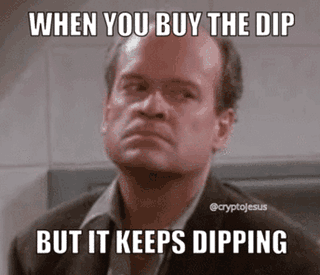Writing a bit later this week as we’ve been busy with a hectic travel schedule. The nice thing is that a conference we attended last week gave us the prompt for today’s article. We were lucky enough to be invited to the AllFunds CEO conference in Miami this week. We had the pleasure of hearing Mark Mobius, Cliff Asness, David Rubenstein, and Miami Mayor Francis Suarez. All these speakers are greatly accomplished investors in their own areas. Except the Mayor, as far as we know he doesn’t have an investing background although if we judge him by his decision to take his salary in Bitcoin, we would say he’s a terrible investor (he decided to receive his salary in Bitcoin in November 2021, when Bitcoin was hovering around the $60k mark, not it’s roughly half that at $27k). Mark made his name in emerging markets investing, Cliff runs AQR a $140B quantitative asset manager focused on public markets; and David is the founder of Carlyle, the $381B private equity giant. It was an interesting line up of speakers for sure, but we want to focus on a topic that came up that we’ve mentioned before. The concept, as Cliff calls it, of volatility laundering. And yes, we’ve used the below gif before but it’s just so applicable here that we had to re-use.
Why Does Private Equity Get to Play Make-Believe With Prices?
A private equity fund, like the ones Carlyle runs, essentially buys companies, either public or private, and takes them (or keeps them) private, makes them more efficient (supposedly), and eventually either sells them or takes them public via an IPO. Since these companies are private, there is no active market price for them. So in order for the funds to report on performance they have to rely on estimates of value. There are numerous ways of valuing a private company (DCF, public company comps, recent transactions, etc.), but that’s for another day. Most private equity funds report their net asset values on a quarterly basis and usually with a lag.
AQR on the other hand invests in public markets. A key aspect of public markets is that there is a readily available price for every security. If you look at Apple stock you will see the price constantly changing as new transactions are taking place. Therefore, public market funds in theory could report their net asset value every second. Depending on the type of fund the frequency of reporting is different. Hedge funds tend to report monthly, mutual funds daily, and ETFs every instant (since they trade just like a stock).
The differences that can arrive from these dynamics can be quite stark. For example the volatility (how much something goes up or down) for the S&P 500 in 2020 was ~34%. However, if we only reported end of month prices this goes down to ~26%. So the private equity structure has a benefit in that definitionally it will show lower volatility. Mechanically the less you observe something the less it will move (or appear to move). So private equity has an advantage over public equity, just because there’s no market price it appears to be lower volatility (even though in reality if you could see prices it would be way more volatile).
The second big difference that comes up is that of the actual price itself. Not only do PE funds report on a quarterly basis, but since there’s no market price, they report an estimated price. Sure there are ways of estimating what the value of something is, but it will never be as accurate as a price set by the market. By accuracy we mean how close the price is to what you could actually sell it for, not what the price in theory should be. The market price by definition is what you can sell something at, if I see Apple trading for $185, I know I can sell my share for $185. If I see a private company valued at $5M I have much less confidence that I could sell that for $5M. In the end something is worth what someone else is willing to pay, which in private markets you don’t know until you try to sell. So estimated prices are less accurate than market prices, and there is way more leeway in adjusting them up or down. For those of you that have ever seen a DCF, if you change a couple of assumptions here or there the value can change significantly. So not only does PE report on a quarterly basis but they get to adjust their prices.
The incentive to adjust marks is huge, they can essentially show lower risk and lower correlations to public markets. For example during Covid from December 31st 2019 to March 31st 2020, the Bloomberg PE Buyout Index only fell 8.91%, The Bloomberg PE Growth Index fell 4.2% and the Bloomberg Venture Capital Index fell 3.43% (ha! yeah right…) while the S&P 500 fell 26.31%. PE companies tend to be smaller and carry more leverage than the typical public market stock. So how can it be that when the largest 500 public companies in the US fell 26%, an index composed of smaller and more levered companies (i.e. riskier) dropped only 10% (and even riskier VC companies only 4%?!)? Right, they didn’t, you just didn’t see the real price. In reality if you would have tried to sell one of those companies the discount would have been massive, probably north of 50% since nobody was buying anything at the time (discounts now are around 34%). But since PE funds report quarterly and can adjust marks, then nobody had to see this.
The problem with this is that it creates a misalignment of incentives. Nobody wants to know the truth. PE managers are happy showing lower volatility (easier to raise money), investors are happy pretending PE has lower volatility, and employees of institutional investors (which invest heavily in PE) have an easier time justifying this to their boards. (there’s also a huge principal-agent problem here but that’s for another time) The only persons which want the truth to come out are people like Cliff (and us), which manage public market funds.
We manage a couple of funds that invest in public markets and we show performance monthly, and we have use market prices. Even though we have very attractive returns, if we could smooth them out like PE does then we would look even better. Like Cliff said “we’re penalized just because we know where to look for the prices”. The funny thing is that if we reported performance like PE does, it would be called fraud, and we would go to jail (in fact there was a recent case of someone that did exactly his, and he’s going to jail). Think about this next time you get your PE statement, or your private real estate statement, or any private investment for that matter. What is common practice in the industry and is considered best practices, would put (and has put) public markets managers in jail.





